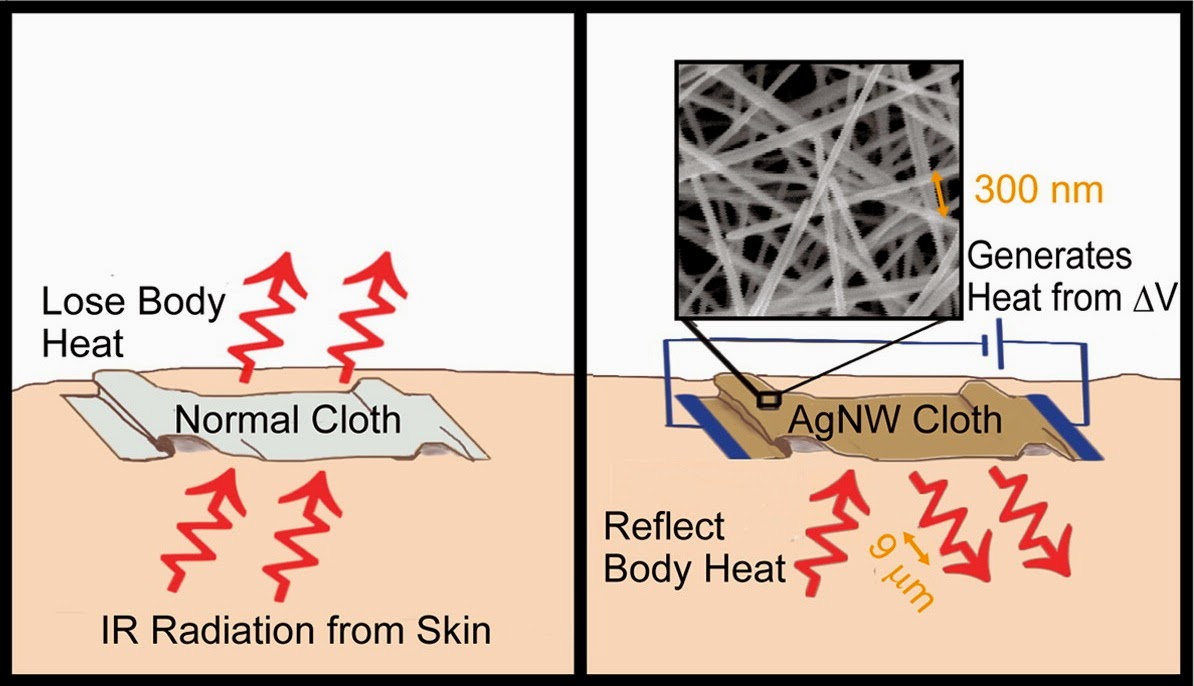If you’ve ever stood exposed and shivering at the end of a run, you’ll know just how quickly the body loses heat without protective clothing. To prevent this, aluminized plastic blankets are a common sight at the end of races; they insulate from cold air and reflect back the body’s heat. But these blankets are impractical and uncomfortable for daily use, trapping in moisture as well as heat.
Using some basic principles of radiation reflection and a coating of silver nanowires, physicists have now developed a new type fabric which can keep you toasty warm and comfortable. So warm in fact that the authors think their insulating fabric could be a solution to the large amounts greenhouse gases created by wintertime indoor heating.
Humans lose heat by four methods, listed in order of decreasing importance:
infrared radiation: the body radiates infrared light, causing it to glow in infrared or night vision cameras.
convection: conduction (see below) combined with moving air whisks heat away from the skin. This is why wind chill is a very real effect.
conduction: the transfer of heat from warm skin to cooler air (or water or that cold metal bench). The denser the surrounding medium, the faster the heat loss.
evaporation: sweat or water on the surface of the skin takes heat away from the body while transitioning from a liquid to a gas. Evaporation also occurs during breathing.
Normal clothing keeps us warm by trapping air against the skin, which heats up and helps reduce conduction and convection. But clothes do little to prevent infrared radiation, which is the main method of human body heat loss (see chapter 6 of The Physics of the Human Body by Irving Herman).
Now a Stanford University research team led by Yi Cui have reported in this month’s Nano Letters that their new nanowire fabric can do it all: insulate against conduction and convection, prevent loss of infrared radiation, allow moisture to escape, and even actively heat up with the help of a battery.

This works because of the size of their fabric mesh. The researchers wanted a metallic layer in order to reflect infrared radiation back towards the body. But unlike the shiny blankets handed out at races, they also wanted to allow moisture to escape so that the fabric would be comfortable to wear all day.
For more details visit: http://web.stanford.edu/group/cui_group/research.htm
http://physicsbuzz.physicscentral.com/2015/01/a-wearable-furnace-keeping-toasty-warm.html

Comments are closed.